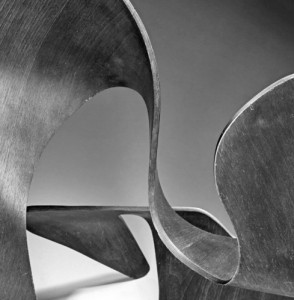‘A chair that looks like a crisp’ or ‘a folding screen that ripples’ are descriptions that are likely to bring to mind North American husband-and-wife design team, Charles and Ray Eames. Revered as two of the ‘most important designers of the 20th century’, their ‘grand sense of adventure’ made significant contributions to modern architecture, furniture design, industrial design and the photographic arts. In our ‘spotlight’ series about architects and designers who inspire us here at RISE Design Studio, we share some of the distinct characteristics of the designs developed by the Eames, trying to capture their spirit of ‘way-it-should-be-ness’ (when an object, through hard work and meticulous process, is realised in the incarnation of its ideal state).
Mass-produced furniture
In the early 1940s, the Eames developed designs with a unique synergy that led to a new phase in how furniture looked and how it could be produced. When knowledge of their moulded-plywood method spread at this stage of their careers, they were asked to design moulded-plywood splints, stretchers and even aeroplance parts for the military during World War Two. After exhibiting their experimental moulded furniture at the New York Museum of Modern Art in 1946, the Herman Miller Company in Michigan began to produce their furniture designs. The success of these initial designs of chairs with compound curves meant they went on to design and mass produce over 100 designs for these types of chairs over four decades, perhaps the most famous design being the moulded-plywood and leather lounge chair with matching footstool.
A mecca for modern architects
In 1949, the Eames switched their focus away from furniture, designing and building their own Californian home as part of a Case Study Home Program, sponsored at the time by an American architecture magazine. ‘The Eames House‘ (as it is known today) is where they lived for the rest of their lives and is considered a classic example of modern residential architecture, as well as a ‘must-see’ for today’s architectural students interested in this type of design. Intended as an experiment to realise the design of a house for a young married couple needing a place to live and work, the design of the house is perhaps as visionary today as it was all those decades ago.
From furniture to film and beyond
In the mid-1950s, the Eames began to focus more on their work as photographers and filmmakers. Charles Eames was an exceptional photographer and his photography work clearly permeated into their design work. The couple designed museum exhibitions, including the IBM Pavilion for the 1964-65 World’s Fair in New York and the Copernicus exhibition at the Smithsonian in the 1970s, both of which drew extensively on their photography and film work.
Looking forwards
Although Charles and Ray Eames are no longer with us (Charles died in 1978, Ray in 1988), members of their family run The Eames Office, which works on communicating, preserving and extending their work.
The Eames understood design as a solution rather than a luxury, and as something that is as much about industry as it is about art. Their vision of design that can get ‘the best to the greatest number of people for the least’ is perhaps one of the reasons why their designs are so timeless and why almost everyone recognises their work.

